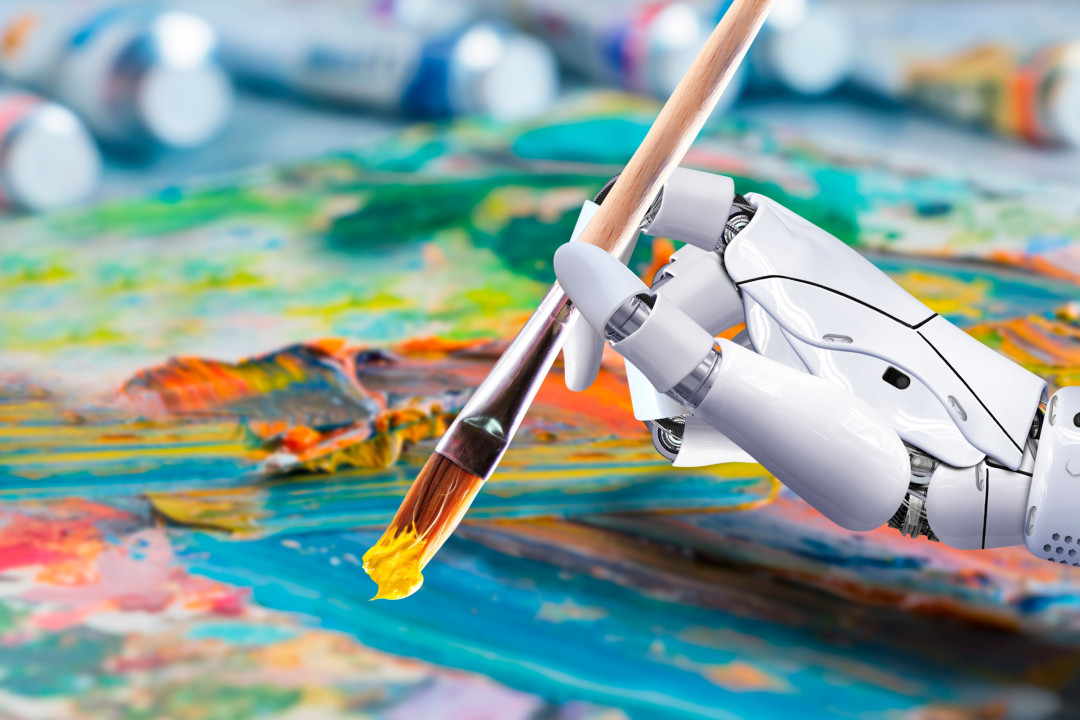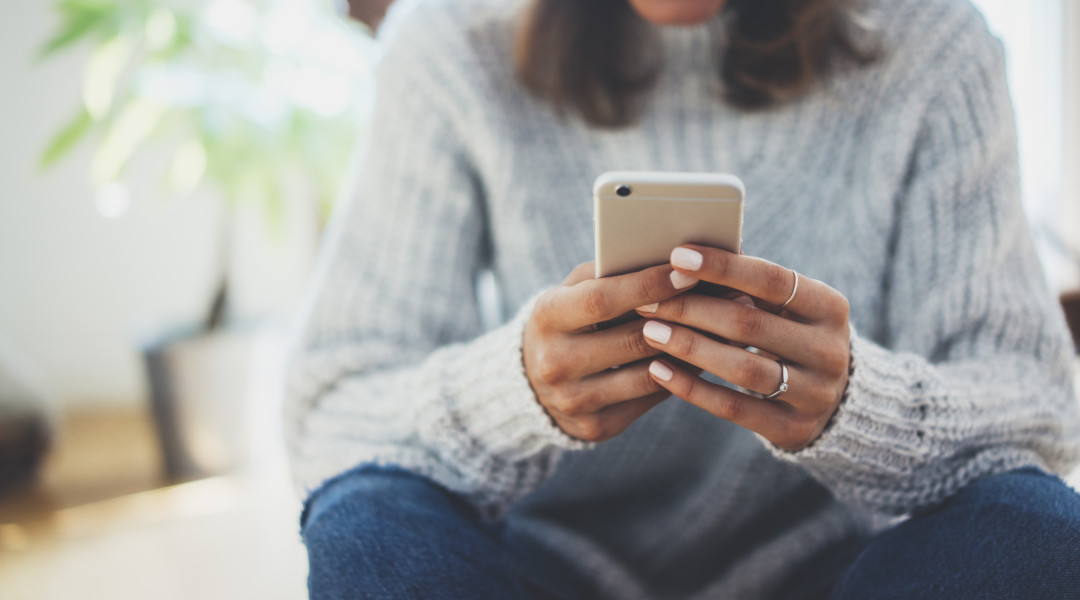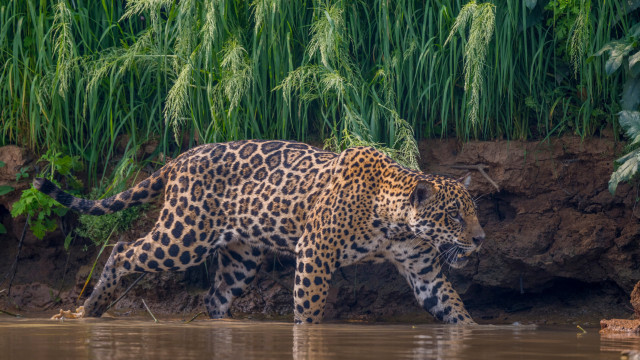





























See Also
See Again
© Getty Images
0 / 30 Fotos
What are AI-generated images?
- AI images are imitations of images the program has seen before. It takes existing images found on the internet to create new images, which means the new images aren't exactly original!
© Shutterstock
1 / 30 Fotos
Verify the source
- So, how do you check if an image is AI-generated? First, check out the source of the information you've received.
© Shutterstock
2 / 30 Fotos
Is the source legit?
- Is the source a news organization, a government organization, or the verified account of a celebrity? Or is it just impersonating a legitimate organization or person?
© Shutterstock
3 / 30 Fotos
Turn on the news
- If the image seems to come from a big news story, check the actual news. If something major has happened in the world, chances are international news organizations would know about it first!
© Shutterstock
4 / 30 Fotos
Where to find breaking news
- You should be able to see and/or hear breaking news alerts on TV, radio, and news websites.
© Shutterstock
5 / 30 Fotos
Look at the image critically
- It’s also a good idea to look at the image critically. Doing so, you'll certainly see that it's an AI-generated image.
© Shutterstock
6 / 30 Fotos
They look unreal
- Although AI-generated images are usually quite convincing, there’s always a certain quality about the image that looks rather unreal.
© Shutterstock
7 / 30 Fotos
Watch for wonky fingers and teeth
- Since data sets that train AI systems tend to only capture pieces of hands, the tech often fails to create lifelike human hands, for instance.
© Shutterstock
8 / 30 Fotos
A major hallmark for AI images
- This can lead to images with stretchy wrists, spindly fingers, or too many digits. Keep an eye out for that.
© Shutterstock
9 / 30 Fotos
Be wary of overly smooth textures
- Some AI image generators produce textures that are excessively smooth, which look too perfect. Also, when it's an image of a human, the skin can come out looking like plastic with a glossy sheen.
© Shutterstock
10 / 30 Fotos
Look for details that don't fit
- Watch out for inconsistencies in the logic of the image itself. For example, clothing fabric that blends together across different subjects, or background patterns that repeat perfectly.
© Shutterstock
11 / 30 Fotos
Assess the overall scene
- Apart from the details, make sure you look at the big picture. First, check the lighting and the shadows, as AI often struggles with accurately representing these elements.
© Shutterstock
12 / 30 Fotos
AI and shadows
- For example, shadows should align with the light sources and match the shape of the objects casting them.
© Shutterstock
13 / 30 Fotos
Investigate text and labels
- If the image you're looking at contains texts, such as panels, labels, ads, or billboards, take a closer look at them. AI-generated text tend to look pixelated or stretched.
© Shutterstock
14 / 30 Fotos
Take a closer look at the text
- Also, if the text doesn't make sense, is out of context, or contains weird phrases that a human wouldn't write, the image you're looking at is likely AI-generated.
© Shutterstock
15 / 30 Fotos
Check the title and description
- Not everyone will disclose the use of AI when posting images, but for those who do, that information will either be in the title or description section of a post.
© Shutterstock
16 / 30 Fotos
Check the comments section
- Another good place to look is in the comments section, where the author might have mentioned it.
© Shutterstock
17 / 30 Fotos
Use an AI image detector
- When in doubt, always run the image through an AI image detector. Just save the image and pull up an AI image detector service.
© Shutterstock
18 / 30 Fotos
AI image detectors
- Free AI image detector services include Illuminarty, Optic AI or Not, and Everypixel Aesthetics.
© Shutterstock
19 / 30 Fotos
How to spot deepfake videos
- Creating a deepfake video has also become highly popular. So, how do you know if it's fake?
© Shutterstock
20 / 30 Fotos
Examine facial movements carefully
- A common warning sign is unnatural eye movements or a lack of eye movement, especially if there's no blinking.
© Shutterstock
21 / 30 Fotos
Lack of emotions
- Also, if a person's face doesn't show the appropriate emotion that aligns with what they're saying, it's likely a deepfake.
© Shutterstock
22 / 30 Fotos
Sound quality is a clue
- Creators of deepfakes typically focus more on visuals than on audio, so you might notice a difference in the sound or speech.
© Shutterstock
23 / 30 Fotos
When it sounds like deepfake
- Pay attention to poor lip synchronization, robotic sounds, strange word pronunciation, digital background noise, and even missing audio.
© Shutterstock
24 / 30 Fotos
Beware of nonsense words
- Nonsense words are common in deepfake creation, as they provide a tool for altering or substituting original speech.
© Shutterstock
25 / 30 Fotos
A dangerous mix
- By blending real and nonsense words, deepfake creators aim to produce convincing audio that imitates the speech patterns of the targeted individual. As a result, viewers may be tricked into believing that a person has said something they actually haven't.
© Shutterstock
26 / 30 Fotos
Examine the physical posture of the person in the video
- If a person turns their head or moves from one frame to another in a jerky way, or if their movements appear distorted or unnatural, be suspicious.
© Shutterstock
27 / 30 Fotos
Notice if a person's body shape doesn't look natural
- Deepfake technology tends to focus on facial features rather than the entire body, making this one of the simpler anomalies to detect.
© Shutterstock
28 / 30 Fotos
Always use your best judgment
- It's always important to use your best judgment when seeing a picture or video. Be critical and keep in mind it could be a deepfake, or actually an authentic image. Sources: (Evening Standard) (Discover Magazine) (Android Police) See also:
Demystifying AI: a beginner's guide to understanding artificial intelligence
© Shutterstock
29 / 30 Fotos
© Getty Images
0 / 30 Fotos
What are AI-generated images?
- AI images are imitations of images the program has seen before. It takes existing images found on the internet to create new images, which means the new images aren't exactly original!
© Shutterstock
1 / 30 Fotos
Verify the source
- So, how do you check if an image is AI-generated? First, check out the source of the information you've received.
© Shutterstock
2 / 30 Fotos
Is the source legit?
- Is the source a news organization, a government organization, or the verified account of a celebrity? Or is it just impersonating a legitimate organization or person?
© Shutterstock
3 / 30 Fotos
Turn on the news
- If the image seems to come from a big news story, check the actual news. If something major has happened in the world, chances are international news organizations would know about it first!
© Shutterstock
4 / 30 Fotos
Where to find breaking news
- You should be able to see and/or hear breaking news alerts on TV, radio, and news websites.
© Shutterstock
5 / 30 Fotos
Look at the image critically
- It’s also a good idea to look at the image critically. Doing so, you'll certainly see that it's an AI-generated image.
© Shutterstock
6 / 30 Fotos
They look unreal
- Although AI-generated images are usually quite convincing, there’s always a certain quality about the image that looks rather unreal.
© Shutterstock
7 / 30 Fotos
Watch for wonky fingers and teeth
- Since data sets that train AI systems tend to only capture pieces of hands, the tech often fails to create lifelike human hands, for instance.
© Shutterstock
8 / 30 Fotos
A major hallmark for AI images
- This can lead to images with stretchy wrists, spindly fingers, or too many digits. Keep an eye out for that.
© Shutterstock
9 / 30 Fotos
Be wary of overly smooth textures
- Some AI image generators produce textures that are excessively smooth, which look too perfect. Also, when it's an image of a human, the skin can come out looking like plastic with a glossy sheen.
© Shutterstock
10 / 30 Fotos
Look for details that don't fit
- Watch out for inconsistencies in the logic of the image itself. For example, clothing fabric that blends together across different subjects, or background patterns that repeat perfectly.
© Shutterstock
11 / 30 Fotos
Assess the overall scene
- Apart from the details, make sure you look at the big picture. First, check the lighting and the shadows, as AI often struggles with accurately representing these elements.
© Shutterstock
12 / 30 Fotos
AI and shadows
- For example, shadows should align with the light sources and match the shape of the objects casting them.
© Shutterstock
13 / 30 Fotos
Investigate text and labels
- If the image you're looking at contains texts, such as panels, labels, ads, or billboards, take a closer look at them. AI-generated text tend to look pixelated or stretched.
© Shutterstock
14 / 30 Fotos
Take a closer look at the text
- Also, if the text doesn't make sense, is out of context, or contains weird phrases that a human wouldn't write, the image you're looking at is likely AI-generated.
© Shutterstock
15 / 30 Fotos
Check the title and description
- Not everyone will disclose the use of AI when posting images, but for those who do, that information will either be in the title or description section of a post.
© Shutterstock
16 / 30 Fotos
Check the comments section
- Another good place to look is in the comments section, where the author might have mentioned it.
© Shutterstock
17 / 30 Fotos
Use an AI image detector
- When in doubt, always run the image through an AI image detector. Just save the image and pull up an AI image detector service.
© Shutterstock
18 / 30 Fotos
AI image detectors
- Free AI image detector services include Illuminarty, Optic AI or Not, and Everypixel Aesthetics.
© Shutterstock
19 / 30 Fotos
How to spot deepfake videos
- Creating a deepfake video has also become highly popular. So, how do you know if it's fake?
© Shutterstock
20 / 30 Fotos
Examine facial movements carefully
- A common warning sign is unnatural eye movements or a lack of eye movement, especially if there's no blinking.
© Shutterstock
21 / 30 Fotos
Lack of emotions
- Also, if a person's face doesn't show the appropriate emotion that aligns with what they're saying, it's likely a deepfake.
© Shutterstock
22 / 30 Fotos
Sound quality is a clue
- Creators of deepfakes typically focus more on visuals than on audio, so you might notice a difference in the sound or speech.
© Shutterstock
23 / 30 Fotos
When it sounds like deepfake
- Pay attention to poor lip synchronization, robotic sounds, strange word pronunciation, digital background noise, and even missing audio.
© Shutterstock
24 / 30 Fotos
Beware of nonsense words
- Nonsense words are common in deepfake creation, as they provide a tool for altering or substituting original speech.
© Shutterstock
25 / 30 Fotos
A dangerous mix
- By blending real and nonsense words, deepfake creators aim to produce convincing audio that imitates the speech patterns of the targeted individual. As a result, viewers may be tricked into believing that a person has said something they actually haven't.
© Shutterstock
26 / 30 Fotos
Examine the physical posture of the person in the video
- If a person turns their head or moves from one frame to another in a jerky way, or if their movements appear distorted or unnatural, be suspicious.
© Shutterstock
27 / 30 Fotos
Notice if a person's body shape doesn't look natural
- Deepfake technology tends to focus on facial features rather than the entire body, making this one of the simpler anomalies to detect.
© Shutterstock
28 / 30 Fotos
Always use your best judgment
- It's always important to use your best judgment when seeing a picture or video. Be critical and keep in mind it could be a deepfake, or actually an authentic image. Sources: (Evening Standard) (Discover Magazine) (Android Police) See also:
Demystifying AI: a beginner's guide to understanding artificial intelligence
© Shutterstock
29 / 30 Fotos
How to differentiate a real person from an AI-generated image
What is real and what is fake these days?
© Getty Images
Have you looked at an AI-generated image lately? Not sure? These days, fake images generated using artificial intelligence, and deepfake videos where celebrities’ heads are superimposed on the bodies of other people, are increasingly more common. It's hard to tell what's real and what's fake, which is problematic.
So how can you avoid being tricked? To help you spot and verify both AI-generated images and deepfake videos, as well as learn about other famous examples, check out this gallery for some helpful tips. Don't let yourself be fooled!
RECOMMENDED FOR YOU




































MOST READ
- Last Hour
- Last Day
- Last Week








